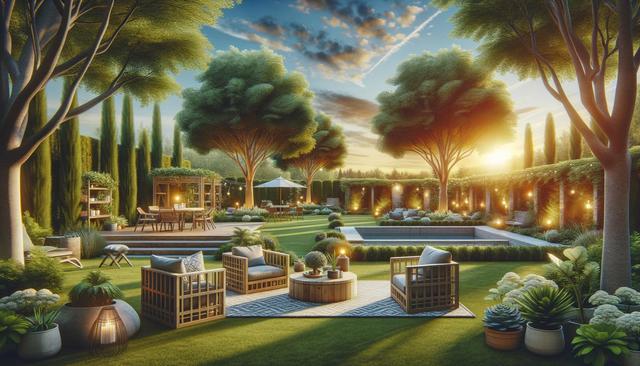Start with a Clean Slate
Before diving into any backyard landscaping ideas, it’s important to begin with a clean and clutter-free space. Clearing debris, fallen leaves, and overgrown branches can give you a better view of your yard’s potential while making it easier to plan improvements. Spring cleaning isn’t just for the indoors—your backyard will benefit just as much from a fresh start. Consider trimming hedges, edging garden beds, and removing any outdated décor or furniture that no longer serves your vision for the space. This initial step sets the stage for more detailed landscaping features and ensures that your outdoor area is easy to navigate and maintain.
Once you’ve cleaned up, take note of your backyard’s natural layout, including sun exposure, slopes, and existing plants. This will help you make informed decisions when introducing new landscaping elements. Keeping the natural composition in mind ensures your additions blend in seamlessly with the environment and thrive without excessive maintenance.
Introduce a Focal Point
Creating a focal point in your backyard not only adds visual interest but also helps define the space. A focal point draws the eye and can make even the simplest landscaping designs feel intentional and polished. Depending on your space and budget, a focal point could be:
- A small water feature such as a fountain or birdbath
- A fire pit with surrounding seating
- A sculptural plant or tree
- An eye-catching pergola or arbor
These elements work well in both large and small backyards, offering a central area around which to build other features. Choose something that complements your desired style—whether modern, rustic, or natural—to give the space personality and cohesion. Incorporating lighting around your focal point can extend the usability of your yard into the evening hours while enhancing the overall ambiance.
Plant with Purpose
Spring is the ideal season to introduce new plants to your landscaping plan. Choose a mix of perennials, annuals, and shrubs to create layers of texture and color. When selecting plants, consider factors like local climate, soil type, and how much sunlight your yard receives. Grouping plants with similar water and light needs can simplify maintenance and improve plant health. Here are a few ideas to get started:
- Layered flower beds with varying heights
- Herb gardens near the kitchen for easy access
- Native plants that require less water and care
- Vertical gardens or trellises for space-saving greenery
Adding mulch to garden beds not only helps retain moisture but also gives your backyard a clean, finished look. Make sure to leave some open space to add seasonal plants later, allowing your landscape design to evolve throughout the year.
Create Defined Zones
Segmenting your backyard into functional zones can make it more enjoyable and easier to use. Instead of viewing your outdoor space as one large area, think of it as multiple rooms with different purposes. For example, you might have a dining area, a lounging spot, a play zone for kids, and a garden retreat. Defined zones help organize the space and make it feel more intentional. Ways to create zones include:
- Using outdoor rugs to anchor furniture
- Installing low fencing or planters as dividers
- Changing ground materials (gravel, grass, decking)
- Adding lighting to highlight each area
This approach is particularly useful for smaller backyards, where multifunctional areas can help maximize usability. Don’t forget to ensure smooth transitions between zones, either through pathways or subtle changes in landscaping materials, to maintain a cohesive design throughout the yard.
Use Decorative and Functional Accents
Even the simplest backyard landscaping ideas can be elevated with the right decorative and functional accents. These small touches can transform a basic yard into a welcoming and personalized retreat. Consider incorporating elements such as:
- Outdoor seating with cushions and weather-resistant fabrics
- String lights or solar-powered lanterns for ambiance
- Garden sculptures or wind chimes for character
- Raised garden beds for both aesthetics and practicality
Functional accents like shade sails, small sheds, or storage benches can also increase the convenience and versatility of your outdoor space. The key is to blend beauty with utility—choosing pieces that not only look good but also serve a purpose. By layering textures and materials, you can create depth and interest without overwhelming the space. Keep the overall style consistent to ensure a balanced and harmonious backyard design.
Conclusion: Simple Changes for a Big Impact
Transforming your backyard this spring doesn’t require a massive overhaul or a huge budget. By focusing on small but impactful landscaping changes—such as cleaning up, adding focal points, planting thoughtfully, defining zones, and incorporating accents—you can turn your outdoor space into a more functional and enjoyable area. These ideas are versatile enough to adapt to a variety of yard sizes and styles, making it easier than ever to refresh your surroundings for the season. Whether you’re entertaining guests or simply looking for a quiet retreat, these simple backyard landscaping ideas can help you get the most out of your outdoor space this spring.






